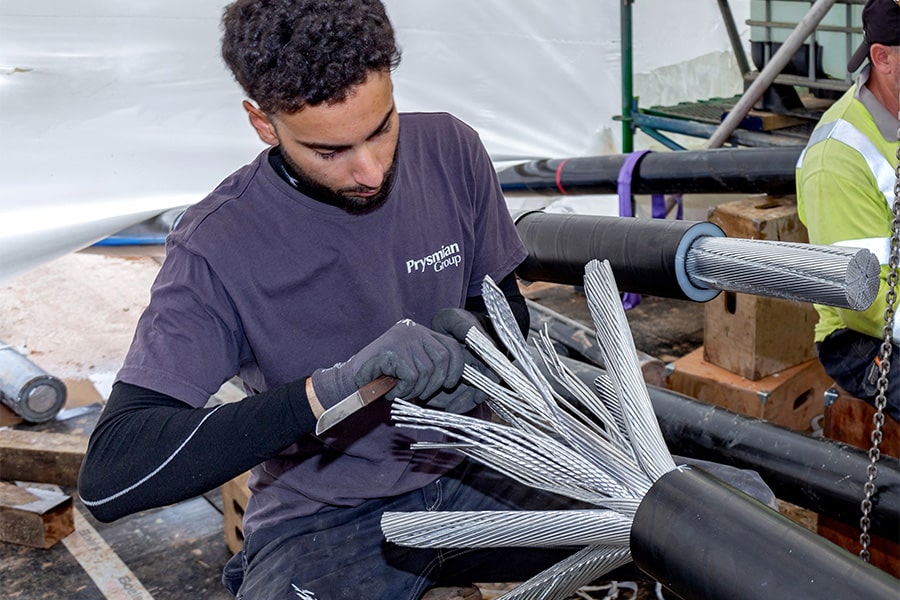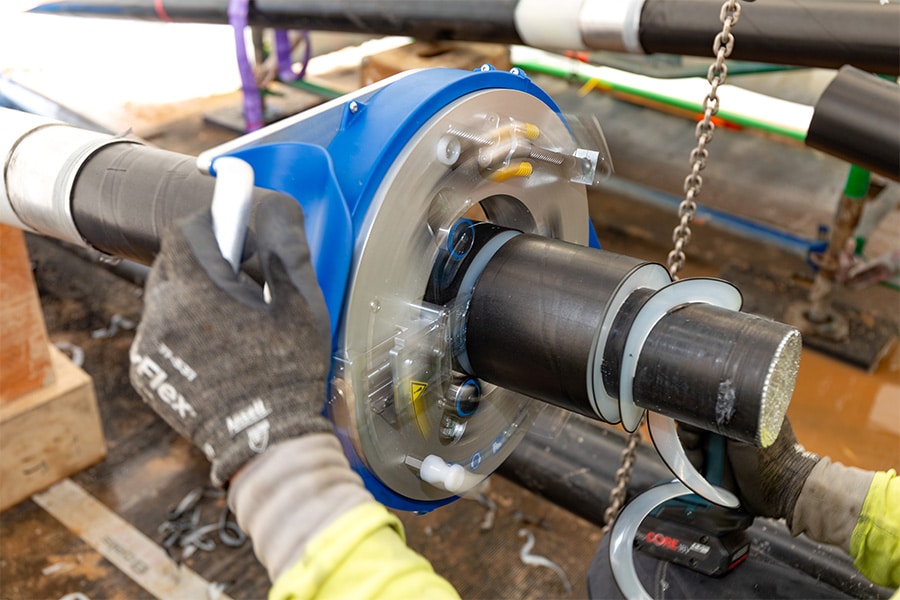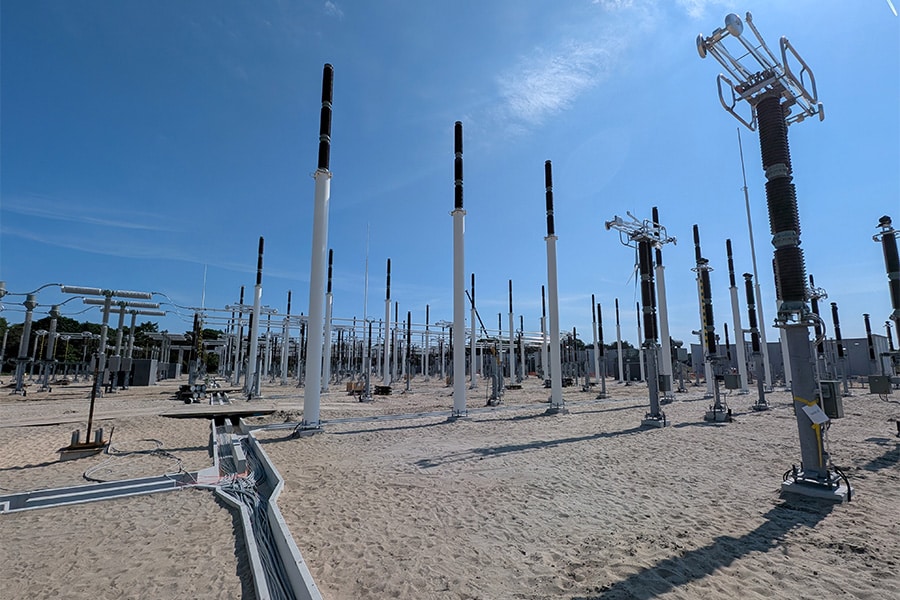
Prysmian supplies cable system for connection between Tilburg-North and new 380 kV substation
For the new Tilburg 380 high-voltage substation, not only a lot had to be done above ground, important steps were also taken underground. Prysmian Netherlands designed, supplied and tested the cable link that connects the new 380 kV substation to the existing Tilburg-North substation. “Our contribution is less visible, but indispensable for the reliability of the entire system,” says Jos van Rossum, HV Engineering Manager at Prysmian.
Design and innovation
Prysmian is responsible for the entire cable system: from basic design and production of cable and trimmings to assembly, testing and handover to TenneT. “We always look at the whole,” Van Rossum explains. “On that basis, we design and build the system. Originally TenneT asked for a 2,500 mm2 copper conductor, we proposed an equivalent aluminum variant of 4,000 mm2: lighter, pricier and building on already existing techniques.” The 4,000 mm2 aluminum conductor is a world first: the first time such a large conductor has been used commercially. “An innovative result from TenneT and Prysmian in a usually conservative sector,” Van Rossum said.

Testing and quality
Beforehand, Prysmian went through an intensive testing program at the factory in which cable, socket and end closure are fully assembled and electrically tested in accordance with TenneT specifications and the Dutch standard NEN-HD632. “That process takes months, but is essential,” says Van Rossum. After installation, field tests follow, including high-voltage tests with a mobile resonant transformer, impedance measurements (resistance of connections) and verification of the grounding concept. “There are currently two more tests running until the end of next year; formal acceptance by TenneT will follow after that. Everything has to be right, because these cables have been in the ground for 50 years or more.”
Cables underground
The connection consists of a 2.8-kilometer double circuit, laid via three horizontal directional borings from 550 to 800 meters under roads and farmland. “Each HDD consists of four plastic tubes: three for the single 150 kV cables and one for communication and grounding settlement cables. There are sleeve connections between the bores to connect the cables.” For those connections, Prysmian applies Click-Fit fittings, prefabricated elements that make assembly easier and more reliable. “The cables are larger and thicker than usual, but the assembly builds on existing techniques that have proven themselves for more than 30 years,” says Van Rossum.
Cooperation and reliability
Cooperation with TenneT and the civil contractor is open and constructive. “We always agree transparently on what we are doing and TenneT is present during the tests,” says Van Rossum. “Ultimately, for us it's all about reliability: cable systems that last for decades. In Tilburg, we show that you can combine proven techniques with innovation. The result is a connection that is reliable today and future-proof tomorrow.”



